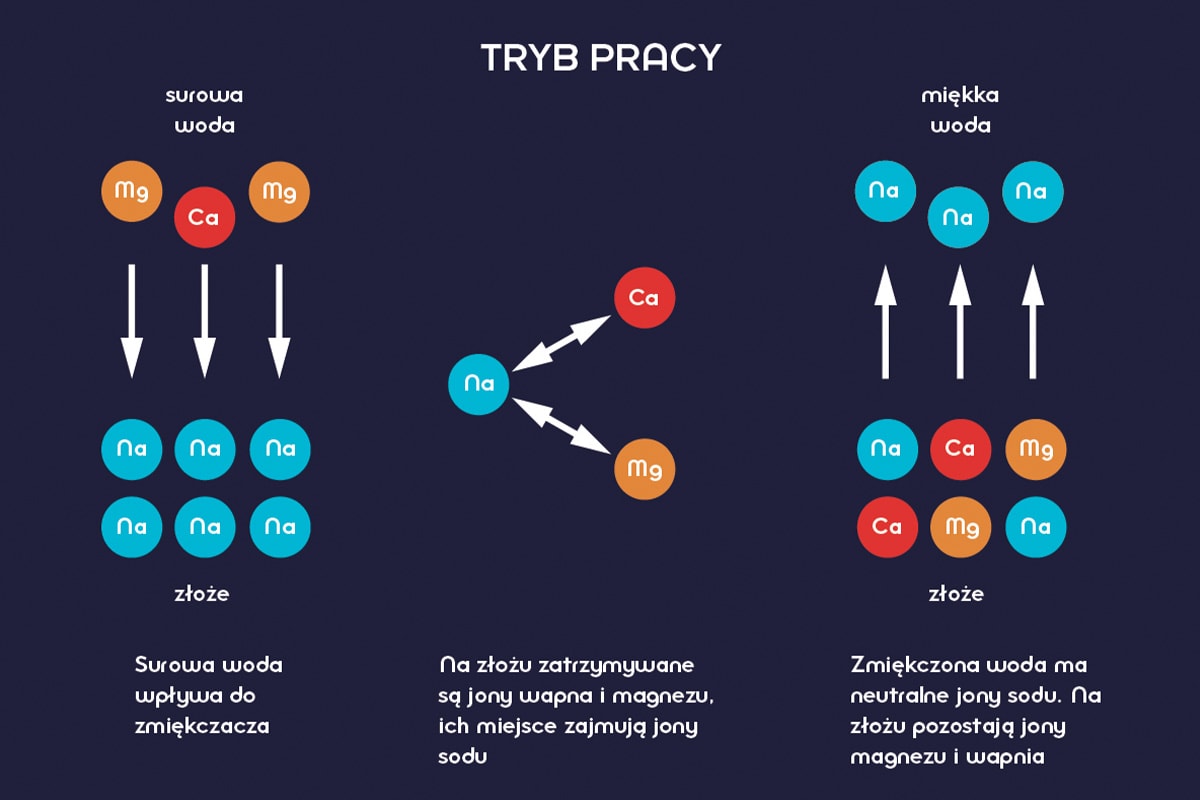A water softener is a high-tech device that essentially works through the process of ion exchange. This process involves replacing calcium and magnesium ions, which are responsible for water hardness, with sodium ions. Thanks to this, the water becomes soft, which translates into many benefits in our everyday life, such as better quality of washing, lower consumption of detergents and protection of water installations against sediments.
The water softener consists of several main elements, such as: a tank with ion exchange resin, a brine tank and a control head. It is the control head that is responsible for controlling the entire water softening process, including managing the various operating modes of the softener.
Water softener operating modes
The water softener operates in several basic operating modes, which are closely related to the water softening process. Below we present the most important of them.
- Water softening mode– This is the basic operating mode of a water softener, in which hard water passes through an ion exchange resin and is changed to soft water. In this mode, calcium and magnesium ions are replaced by sodium ions.
- Regeneration, brining mode– After some time, the ion exchange resin begins to be saturated with calcium and magnesium ions, which means that it is no longer able to effectively soften water. Then the regeneration process takes place, which involves rinsing the resin with brine (salt solution), which washes away the calcium and magnesium ions, restoring the resin's ability to soften water.
- Rinse mode after brining– After regeneration, the resin must be rinsed to remove excess salts and calcium and magnesium ions. Water is pumped through the resin in the opposite direction to normal flow, which helps remove any residue.
Advanced softener operating modes
Modern water softeners are equipped with advanced control systems that enable automatic switching between operating modes depending on current needs. Thanks to this, the water softening process is not only highly effective, but also energy-saving.
- Proportional regeneration mode– Some water softeners feature a proportional regeneration mode. This means that the regeneration process is only started when necessary, based on the amount of softened water. Thanks to this, the softener uses less salt and water, which translates into lower operating costs.
- Water saving mode– Some softeners have a water-saving function, which involves optimizing the regeneration process to use as little water as possible.
- Holiday mode– If you do not use the water for a long time, you can activate the holiday mode, which allows you to stop the water softening process during your absence. After returning, the softener automatically returns to normal operation.
All these operating modes, both basic and advanced, serve to ensure that the water softener operates as efficiently and ecologically as possible. Thanks to this, we can enjoy soft water in our homes without worrying about excessive salt, water or energy consumption.
Understanding the operating modes of your water softener is crucial to properly operating the device and getting the maximum benefits from it. Remember that regular servicing and maintenance is essential to keep your softener in good condition and to ensure its long-term operation.



